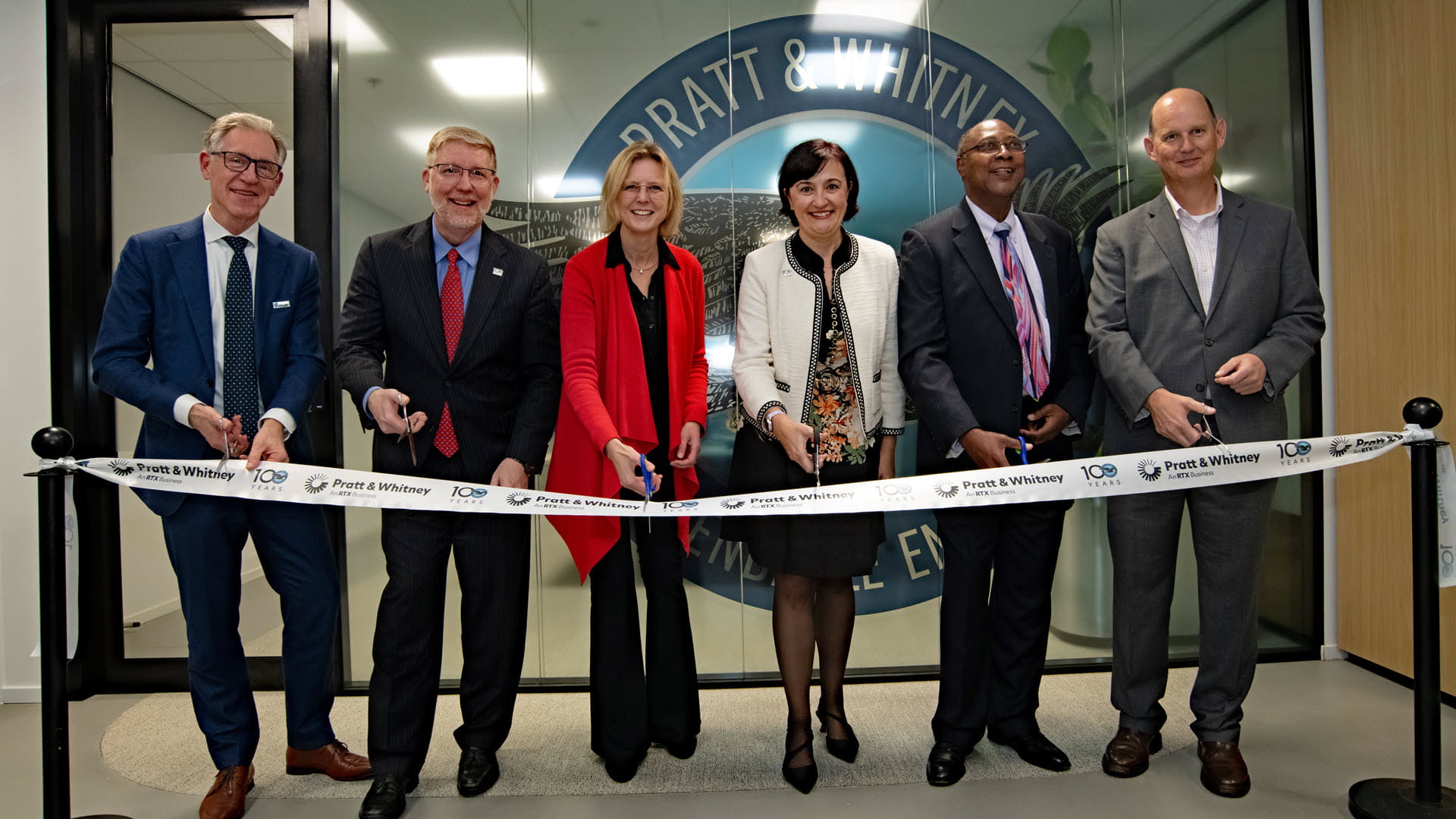RTX’s Pratt & Whitney opens European Technology and Innovation Center in the Netherlands – RTX

Establishment of European Technology and Innovation Center (ETIC) and its Alignment with Sustainable Development Goals
Introduction and Strategic Purpose
On November 13, 2025, Pratt & Whitney, a business of RTX, inaugurated its European Technology and Innovation Center (ETIC) in Houten, Netherlands. The facility is dedicated to the research and development of advanced aircraft propulsion technologies. Its primary mission is to enhance energy efficiency and performance in future commercial aircraft, thereby contributing to a more sustainable aviation industry. This center represents a first-of-its-kind independent innovation facility for Pratt & Whitney in Europe, augmenting its existing global engineering and technology network.
Core Research Areas and Contribution to SDG 7 and SDG 13
The ETIC will concentrate on a range of high-impact technologies designed to accelerate the transition to sustainable aviation. The primary research domains include:
- Advanced gas turbine systems
- Hybrid-electric propulsion
- Hydrogen propulsion
This focus on cleaner and more efficient energy sources directly supports key United Nations Sustainable Development Goals. The research into hybrid-electric and hydrogen propulsion aligns with SDG 7 (Affordable and Clean Energy) by exploring alternatives to conventional fossil fuels. Concurrently, the objective to improve energy efficiency and reduce emissions contributes directly to SDG 13 (Climate Action) by addressing the aviation sector’s environmental impact.
Strategic Location and Collaborative Framework
The ETIC is strategically co-located at Collins Aerospace’s existing European Innovation Hub in Houten. The selection of the Netherlands is based on the nation’s strong engineering talent pool and its established history of aerospace technology innovation. The center is designed to serve as a hub for collaboration between industry, academia, and government agencies across Europe.
Alignment with SDG 9 and SDG 17
The establishment and operation of the ETIC embody the principles of SDG 9 (Industry, Innovation, and Infrastructure) by creating a resilient infrastructure for cutting-edge technology research and fostering innovation within the aerospace industry. The center’s operational model is fundamentally based on collaboration, which is central to SDG 17 (Partnerships for the Goals). Key partnerships established to advance these goals include:
- A master research agreement with Delft University of Technology (TU Delft), further enhanced by a dedicated Pratt & Whitney office at the TU Delft Aerospace Innovation Hub.
- Two memoranda of understanding with the Netherlands Aerospace Group to establish a framework for broad technology research collaboration.
- Ongoing engagement with a wide network of industry and academic partners throughout Europe.
Stakeholder Perspectives and Governmental Support
Support for the ETIC has been affirmed by key stakeholders. Leadership from Pratt & Whitney highlighted the significant potential for growth and collaboration within the Dutch innovation ecosystem. Representatives from TU Delft noted that the direct partnership will strengthen their innovation ecosystem and is crucial for developing the technologies and talent required for a sustainable aviation future. The Dutch Ministry of Economic Affairs and Innovation has also endorsed the initiative, stating that the center enhances the shared vision for accelerating sustainable aviation through innovation and international collaboration, reinforcing the national commitment to these transformative efforts.
Analysis of the Article in Relation to Sustainable Development Goals
1. Which SDGs are addressed or connected to the issues highlighted in the article?
The article discusses the establishment of a new technology and innovation center focused on sustainable aviation. The key issues of energy efficiency, technological innovation, research partnerships, and creating a sustainable future for the aviation industry connect to several Sustainable Development Goals (SDGs). The following SDGs are addressed:
- SDG 7: Affordable and Clean Energy: The center’s focus on “enabling greater energy efficiency” and researching technologies like “hybrid-electric and hydrogen propulsion” directly relates to the goal of ensuring access to affordable, reliable, sustainable, and modern energy.
- SDG 9: Industry, Innovation and Infrastructure: The core theme of the article is the opening of a new “European Technology and Innovation Center (ETIC)” dedicated to “researching advanced propulsion technologies.” This aligns perfectly with building resilient infrastructure, promoting inclusive and sustainable industrialization, and fostering innovation.
- SDG 13: Climate Action: By aiming to accelerate “sustainable aviation” and developing technologies that improve energy efficiency and use alternative fuels like hydrogen, the initiative directly contributes to combating climate change and its impacts by reducing the aviation industry’s carbon footprint.
- SDG 17: Partnerships for the Goals: The article heavily emphasizes collaboration. The ETIC is a result of partnerships between a private company (Pratt & Whitney, an RTX business), academia (Delft University of Technology), and government (Ministry of Economic Affairs of the Netherlands), which is the essence of this goal.
- SDG 4: Quality Education: The collaboration with Delft University of Technology to “shape the talent that will drive our industry forward” and the reliance on a “strong engineering talent pool” connect to the goal of ensuring inclusive and equitable quality education and promoting lifelong learning opportunities, particularly in technical fields.
2. What specific targets under those SDGs can be identified based on the article’s content?
Based on the article’s focus, several specific SDG targets can be identified:
- Target 7.3: “By 2030, double the global rate of improvement in energy efficiency.” The article’s central mission for the ETIC is to research technologies for “enabling greater energy efficiency” in commercial aircraft.
- Target 9.5: “Enhance scientific research, upgrade the technological capabilities of industrial sectors in all countries…encouraging innovation and substantially increasing the number of research and development workers…” The establishment of a dedicated “Technology and Innovation Center” to conduct “cutting edge technology research” and “collaboration on aircraft propulsion technology research and development” directly supports this target.
- Target 17.6: “Enhance North-South, South-South and triangular regional and international cooperation on and access to science, technology and innovation…” The article describes a clear example of international cooperation, with a U.S.-based company (RTX) establishing a center in Europe to collaborate with Dutch and other European industry and academic partners.
- Target 17.17: “Encourage and promote effective public, public-private and civil society partnerships, building on the experience and resourcing strategies of partnerships.” The initiative is a public-private partnership involving RTX, Delft University of Technology, and the Dutch Ministry of Economic Affairs, as evidenced by the “memoranda of understanding” and “master research agreement.”
3. Are there any indicators mentioned or implied in the article that can be used to measure progress towards the identified targets?
The article, being an announcement, does not provide quantitative data but mentions or implies several qualitative and activity-based indicators that can measure progress:
- For Target 9.5 (Research and Innovation):
- The formal opening and operation of the European Technology and Innovation Center (ETIC) itself is a primary indicator of investment in R&D infrastructure.
- The establishment of a dedicated office space at TU Delft’s Aerospace Innovation Hub serves as an indicator of enhanced collaboration and access to an innovation ecosystem.
- For Target 17.17 (Partnerships):
- The signing of “two memoranda of understanding with the Netherlands Aerospace Group.”
- The signing of a “master research agreement with Delft University of Technology.”
- The active collaboration between industry (Pratt & Whitney), academia (TU Delft), and government (Ministry of Economic Affairs of the Netherlands) on technology research.
- For Target 7.3 (Energy Efficiency):
- An implied indicator is the development of specific “advanced gas turbine systems, hybrid-electric and hydrogen propulsion” technologies that can be measured for their potential to increase energy efficiency in aviation.
4. Table of SDGs, Targets, and Indicators
| SDGs | Targets | Indicators Identified in the Article |
|---|---|---|
| SDG 7: Affordable and Clean Energy | Target 7.3: Double the global rate of improvement in energy efficiency. | Research and development into technologies for “greater energy efficiency,” including “hybrid-electric and hydrogen propulsion.” |
| SDG 9: Industry, Innovation and Infrastructure | Target 9.5: Enhance scientific research and upgrade technological capabilities. | The establishment of the European Technology and Innovation Center (ETIC) to conduct “cutting edge technology research.” |
| SDG 13: Climate Action | Contribute to taking urgent action to combat climate change. | The stated goal of accelerating a “sustainable future of aviation” through innovation. |
| SDG 17: Partnerships for the Goals | Target 17.6: Enhance international cooperation on science, technology and innovation. | Establishment of an innovation center in the Netherlands by a U.S.-based company to collaborate with European partners. |
| Target 17.17: Encourage and promote effective public-private partnerships. | Signing of a “master research agreement with Delft University of Technology” and “memoranda of understanding with the Netherlands Aerospace Group.” |
Source: rtx.com
What is Your Reaction?
 Like
0
Like
0
 Dislike
0
Dislike
0
 Love
0
Love
0
 Funny
0
Funny
0
 Angry
0
Angry
0
 Sad
0
Sad
0
 Wow
0
Wow
0
















































/environment-climate-change-and-health-(ech)/water-sanitation-hygiene-and-health-(wsh)/landfill-tuvalu-36092.tmb-1200v.jpg?sfvrsn=5c21fe40_1#)

.jpg.webp?itok=0ZsAnae9#)


























